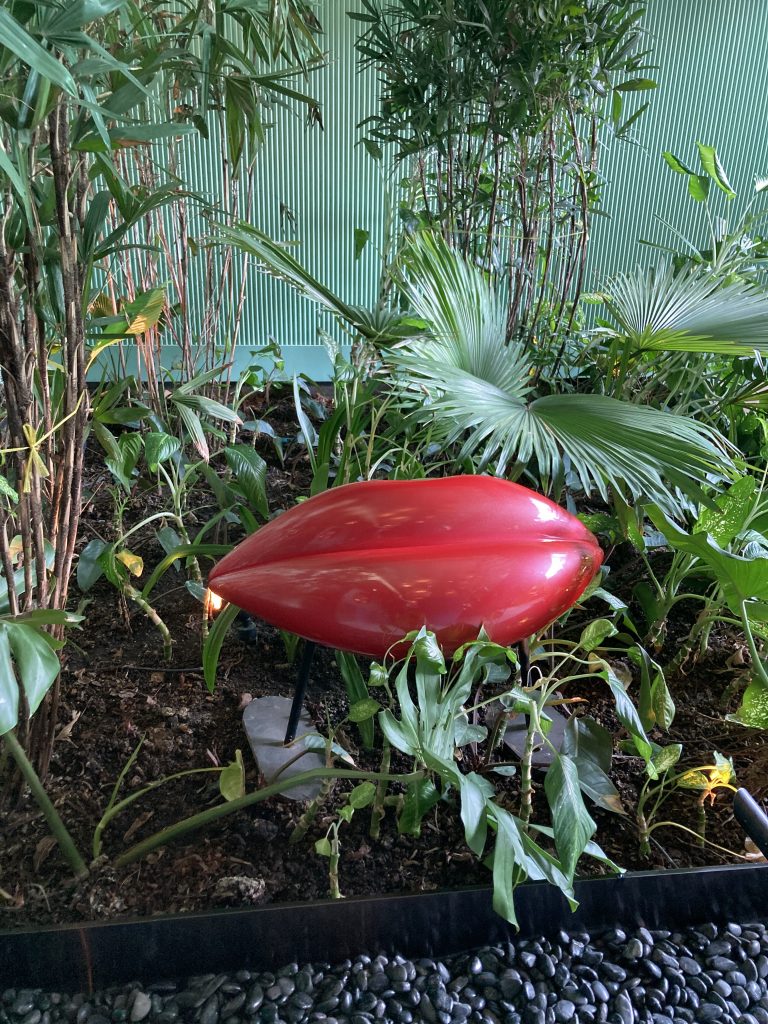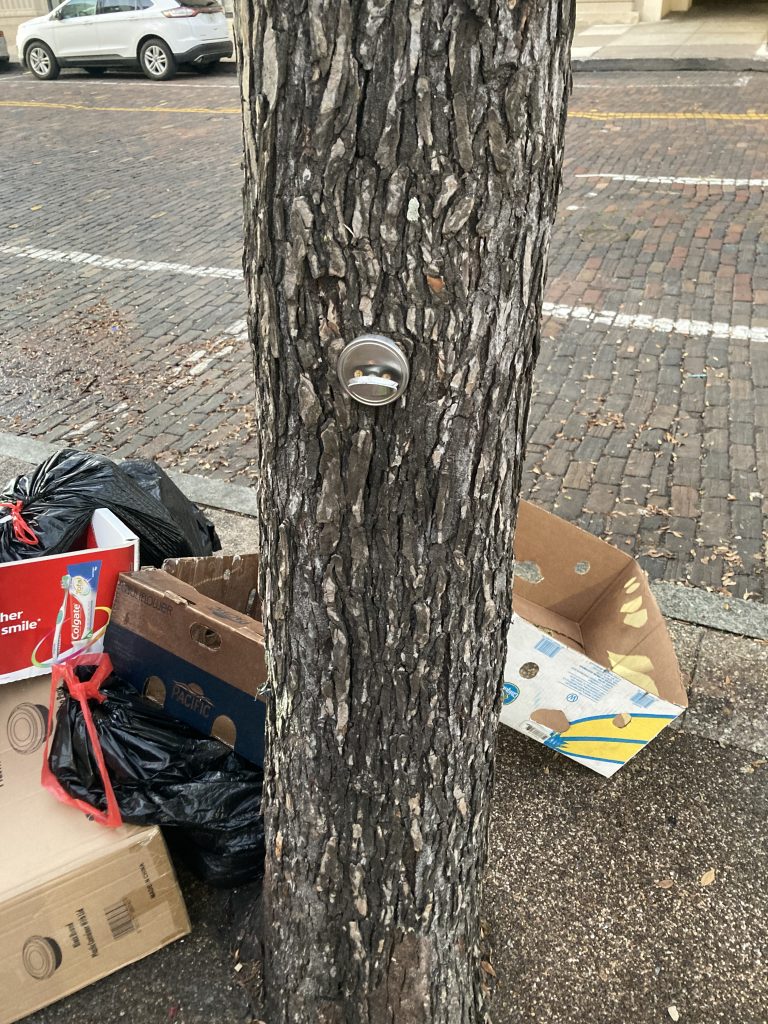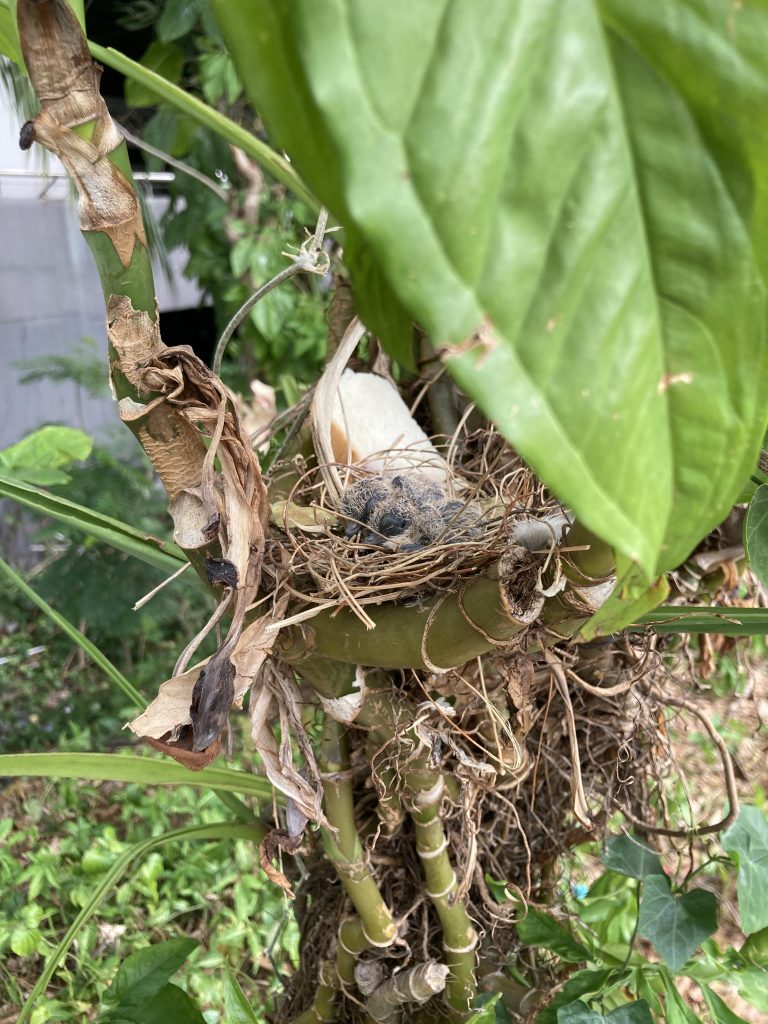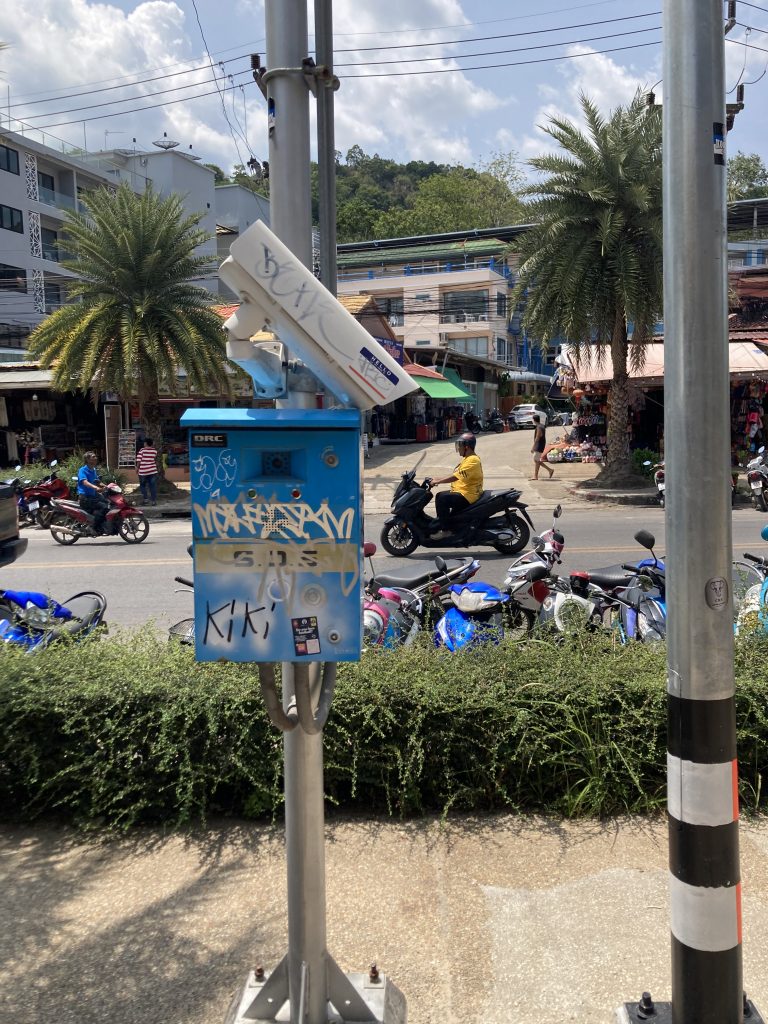robots

The traveler explores the American Wayside, verifying the contents of a mysterious guide written by a man with whom he shares a likeness and name. Excerpts from ‘Autumn by the Wayside: A Guide to America’s Shitholes’ are italicized. Traveler commentary is written in plain text.

There is a man having some sort of lonely mental crisis at the central point of ‘Compelled Echo State Park.’ A Ranger is stretched across a bench nearby, looking at his phone. He hears me approaching and shifts as though he might lend the weeping man some assistance, fulfilling what, I have to assume, is his duty at this particular posting. He shrugs, instead, and goes back to ignoring us both.
To be fair to the man-in-crisis, ‘Compelled Echo Cave’ is a lot to wrap your head around. The nearer I get, the clearer it is that the man’s outbursts are being prompted by the cave itself. The distant sounds of his own hysterics emanate from the dark, there, and hearing them elicits a fresh bout of wailing. Though, that’s not really what’s happening, is it? In reality, the man is being compelled to echo the wailing- his crisis playing out in the cave before it manifests on the surface. I feel a twinge of existentialist discomfort, myself, and before I can find the words to comfort the man, I hear my own voice echo out of the cave: You okay, man?
It’s exactly the sort of low-bar discomfort I have to offer in any situation: reluctant and almost judgmental. I try to think of something else to say but the words form in my mouth anyway.
“You okay man?”
No. The cave says.
“No,” the man answers.
To be fair to the Ranger, this seems like the sort of thing a person has to work out on their own.
‘There is no better way to upset your already less-than-stable understanding of the universe than to visit ‘Compelled Echo State Park,’ where the cave seems to anticipate noises at its mouth just before they happen. Researchers of the compelled echo phenomenon fits neatly into the established understandings of natural science, but the papers they produce utilize a great deal of technical jargon to beat around the bush and to eventually suggest other avenues of study to be explored at a later date.
Some find the pre-mimicking of ‘Compelled Echo Cave’ to be difficult, but ultimately therapeutic. Others insist alien wordings and intonations are insinuated into what they are forced to say at the mouth. Still others assume the whole thing is a scam. Suffice to say: nobody likes the sound of their own voice.’
The cave speaks again: Look, I’ve never been good at this sort of thing under normal circumstances. I’m not going to make you feel better.
It pauses so I can catch up. The words tumble from my lips.
But this thing has always been here and seeing it for yourself doesn’t change anything.
I say all of that, too, and then I hear Hector sneeze in the darkness. A few seconds later, the Hector at my feet sneezes and seems legitimately surprised by the cave, as though it’s the first strange thing he’s noticed in all this traveling.
I hear the sneeze because the cave, and therefore the man, has quit crying. In fact, when I listen closely, I can hear the unexercised grunt of me pulling him to his feet.
The man opens his mouth to speak and I stop him, afraid we’ll end up back where we started. It must work, because the cave stays quiet and, soon, I hear the man’s footsteps fading into the dark. Soon after that he leaves.
Thanks! The cave shouts, and I turn in time to see the Ranger say the same thing. He follows the man down the trail and toward the parking lot.
I sit at the entrance of the cave for a long time, waiting to hear what I’ll say next.
But no words come.
-traveler

‘Likely the most miserable creature on earth, ‘The Angry, Impotent Cat of Bank County, Arizona’ is homeless by choice and, thus, is somewhat difficult to pin down, geographically, in a medium that cannot effectively utilize GPS. There are websites and social media accounts dedicated to tracking the direction of its wanderings. That direction is inevitably ‘away from the people who are trying to interact with it’ so most photos of ‘The Angry, Impotent Cat’ are of its butthole, likely the only aspect of its fame the cat would approve of.
Not to be confused with ‘The Angry, Important Cat of Bank County, Arizona,’ an elected official.’
-an excerpt, Autumn by the Wayside

There’s a lot to be said about the walled-off border of ‘The 51st State,’ but what stands out most to me is just how flat it seems despite, according to maps, being a massive, perfect circle. The credibility of the map is questionable, sure. That’s true of any map that reveals the shape and location of the secret ‘51st State.’ Holding a map like that is a misdemeanor at least. Creating maps- distributing them- is unquestionably felonious and maybe also the sort of thing that gets you thrown into the sort of prisons that don’t show up on maps either. Irony at its most cruel.
They can’t throw you in jail for finding the wall, though. That would be tough. It’s huge, towering hundreds of feet in the air. It reeks of misplaced tax money, the quality with which it’s been built and the care with which it’s maintained. People find this wall all the time, I’m sure, and without knowing the context, they must wonder the same thing we all do: keeping us out or something else in?
‘Rumor has it that official maps of the continental United States disguise the location of ‘The 51st State’ by widening borders and shaving off little latitudinal degrees where the average non-cartographer won’t miss them. Situated as it is, where Midwestern prairies drag on for miles in every direction, it’s the sort of discrepancy that most will overlook without a second thought. The wall itself serves much the same purpose, it being the color of sandstone and curved so subtly as to blend in with landscapes and horizons when viewed from the highway. It is so bland- so unseeable- that certain stretches of interstate have been forced to draw some attention to the wall in order to keep vehicles from colliding with it as drivers pull to the shoulder to relieve themselves.
Of course, once the wall is seen, it can’t be unseen. It is the single largest construction on American soil. Unofficial estimates put ‘The 51st State’ as the tenth largest in the nation but that sort of math is wholly unnecessary when faced with the truth of the thing. It breathes enormity and it has the allure of a dead insect- grotesque and dangerous for all that it’s still.
As for what’s behind it, collecting the ideas about ‘The 51st State’ and its daunting wall has proven a difficult task. There are just so many theories and the people that ask about them just keep disappearing.’
-traveler

It takes about three days before I admit to Hector, and to myself, that I may have gotten us lost. It doesn’t really sink in until that evening, when I’ve finished rolling strips of old billboard vinyl into tight logs for a fire we can’t enjoy too closely without inhaling psychedelic adhesive fumes. This is what being lost is: assuming everything will sort itself out around one too many bends. More specifically, being lost in ‘Billboard Hell’ is allowing one too many signs to guide you in the wrong direction. It’s second-guessing the intent of an advertisement for a burger joint that should just be five minutes away left- going right because you suspect some sort of guerilla reverse psychology is at work. It’s tearing through a billboard to find yourself facing a second, smaller sign for the same company, congratulating you for ‘thinking outside the box’ and offering its services in sign repair.
We have another couple days of food. Probably a day’s worth of water unless it rains.
There is an engine running, somewhere, and we head that direction in the morning. There’s nowhere else to go.
‘It stands to reason that, because Vermont maintains a state-wide ban on billboards, there must exist a concentration of billboards somewhere else in the country to offset the deficit. This is the less-than-scientific explanation for ‘Billboard Hell,’ which stretches over several states but seems to be confined mainly to the rust belt. Where it exists exactly is hard to say because there are a lot of places in the US that might qualify as a billboard hell and the ‘Billboard Hell’ is always shedding old roots and branching ever forward.
The Rangers suggest travelers wishing to avoid ‘Billboard Hell’ remain within the boundaries of Vermont and ignore any signs that might be trying to coax them across the border.’
-traveler

‘‘The Fridge-Magnet Safe-Hold’ (or FMSH) is relatively new to the Wayside and was a small, unadvertised venture until 2022 when fictional mob boss Tom Get (of the series, ‘Getmen’) uttered a now signature phrase: ‘sleeping with the fridges.’ This euphemism, seemingly misspoken, resolved itself at a scene filmed on-site at the ‘FMSH,’ in which Tom reveals that the business serves as a convenient way to ‘keep the fuzz from taking hold of ‘em’ (itself, a colloquialism for police investigation, not an allusion to mold). The episode proved popular enough that the ‘FMSH’ tactic for hiding bodies featured several more times- right up until a real body was discovered there.
We’re getting ahead of ourselves.
‘The Fridge-Magnet Safe-Hold is a fridge dump and magnet-storage solution all in one. It was founded with an understanding that many American families are upgrading to refrigerators that, through shape or material, are unable to hold the magnets that had become sentimental on previous models. For a small fee (discounted with the simultaneous donation of a fridge) a family can rent fridge space in a building that is, in all other ways, your average storage beehive. Units consist of a single fridge behind a clear plexiglass door so that the stored magnets can be viewed but not touched. For five dollars, anyone can walk the halls of the FMSH and admire the collections housed within except on Wednesdays and Saturday, when entry is reserved for unit holders only. This is likely when most people take a moment out of their week to store figurative skeletons in their closets, these fridges being mostly airtight and just inconspicuous enough to allow for the storage of petty secrets. The expectation for these skeletons to be ‘figurative’ is why the dead body felt like such a party foul to those who used the place as intended.’
Hector and I arrive at ‘The FMSH’ on a Thursday- a slow day, I’m told. Those other visitors I see around me tend to slot into a few categories: the true crime enthusiasts, the ‘Getmen’ fans, the fringe art students, and the miscellaneous drop-ins, like myself. The true-crime and Getman folks are crowded around a rather drab looking display in the northeast portion of ‘The FMSH.’ I stand near the back for a while before I understand why: the stench.
Something is rotting in the fridge.
A man, a tour guide I assume, has drawn the attention of the crowd to the plastic letter magnets on display, there, suggesting very generally that theoretical hitmen might (and fictional hitmen certainly would) leave coded messages in letters like these to ensure their fellows in crime might understand the nature of what is inside. The crowd eats this up, some trying to decipher the magnets, others asking if it might be wise to call the police, secretly hoping, I’m sure, to be on-site when a new discovery is made.
The guide deflects the latter suggestion in a way that makes me think whatever group he’s associated with has filled the fridge with meat for effect. The crowd moves on.
A group of children eat lunch at the opposite end of the property, taking advantage of an otherwise empty hallway. I step over and through them and despite my rush, despite my worn-ragged clothes and body, they stop me to ask question about Hector, who eats his fill of sandwich lettuce and baby carrots while the chaperones grimace nearby.
In a lull that threatens to be awkward, I ask about the drawing of a house on one of the nearby fridges and soon find myself on a miniature tour of schoolwork. This hallway has been rented to the school, it seems, and the children post their exemplars here for viewing. They seem proud, and rightfully so, especially given such a strange audience as me and my rabbit. I go and spoil things at the end, though. I suggest, to one of the teachers, that if I were going to hide a body in any fridge, these make a lot more sense than the rest.
-traveler
© 2024 · Dylan Bach // Sun Logo - Jessica Hayworth